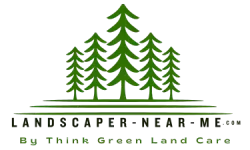
Sod Care Made Easy - Maintain your Lawns Green Look and Health all Year Long
Sod Care Guide, The Essentials: Upkeep Tips, Watering plan, and The Correct Fertilizers

Developing a beautiful, green lawn begins with efficient sod care. Regardless of your maintaining commercial properties or high-end residential landscaping services, correct sod maintenance is crucial. With the correct methods, sod can develop deep roots, maintain brightness and avoid common lawn issues.
Aware of Sod Care Fundamentals
Sod Care is more than just maintaining green grass. It is about advancing root health, advancing health, and avoiding issues like weeds and insects. A well cared for lawn contributes to curb appeal, improve property value, and allows for an alluring space. Within you will find practical awareness to preserve a healthy sod lawn, along with mowing schedule to irrigating time lines and fertilizer suggestions.
Sod Care Ideas for a Healthy Lawn
Continuous maintenance is the bed rock of sod care. The following are prudent ideas to keep your lawn looking its best.
Mowing Proven Practices
Mow at the correct height: During its beginning growth, keep the mowing height around 2 ½ to 3 inches. This height assists with helping shield the roots from direct sunlight, achieving healthy root development.
Regular Mowing: Continued mowing promotes grass to grow thicker and denser. The goal is to mow continuous enough that no more than a 1/3 of the grass blade is taken away every time. This way limits stress on the grass and maintains the lawn durability.
Weed and Insect Avoidance
Environmentally Friendly Weed Control: Avoiding weeds by maintaining weed density. Thicker grass moves out weeds, allowing them less room to grow. Usa an eco-friendly insecticide in early spring to prohibits the weeds from sprouting.
Safe Insect Management: Sod Lawns can lure insects like grubs and chinch bugs. Continued examination helps avoid infestation early. Use insect control choices specifically labled safe for sod to prevent harming the grass.
Soil Integrity
Examine Soil pH: Sod flourishes in soil with a pH level of 6.0 to 7.0. A test can assist you with understanding if your soil needs any modifications.
Nutritional Monitoring: Sod needs nitrogen, phosphorus, and potassium. A common soil test shows which nutrients are insufficient, assisting you pick the best fertilizer for optimum development.
Lawn Watering Schedule for Sod
Watering is critical, specifically when sod is new. The proper watering schedule avoids root dehydration and promotes healthy growth.

Occurrences of Watering for New and Established
New Sod: Watering every day for the first two weeks, specifically during hot and dry weather. Early morning watering assists the sod with absorbing moisture before the sunlight dries it. Shoot for 1 inch of water each day.
Mature Sod: Following the first two weeks, lessen watering to 3 times a week modifying regards to rainfall. A deep, less occasionally watering schedule promotes roots to grow deeper.
Seasonal Change
Watering requirements adjust with the seasons. When it’s summertime, increase the watering occurrences slightly to avoid dehydration. Within the cooler months, you can water less often as lower temperatures assist with keeping soil moisture.
Watering Methods
Early Morning: Irrigating around 6-9am lowers evaporation and allows moisture to soak in the soil.
Avoid Evenings: Avoid watering in the evening, as moisture left nightlong can produce fungal growth.
Drip System and Sprinklers: Usage of sprinklers for even treatments. For commercial properties, a drip system can offer effective water delivery, making sure each area is given the proper amount without over runoff.
Best Fertilizer for Sod Health
Fertilizers offer needed nutrients that keep sod green and plush. Picking the correct type and applying it at the correct times, assists the sod to grow thick along with staying resilient against stress.
Types of Fertilizers
Slow-Release Fertilizers: Great for sod, as they deliver nutrition slowly, providing consistent growth.
Organic Fertilizers: Organic choices are favorable for soil health, increasing structure and nutritional content. Think about organic choices for residential areas to minimize chemical interaction.
Application Timing
Spring and Fall: These best times for fertilizing, as sod is most active in nutrient absorption along with these seasons. Distributing balance fertilizer in early spring and then in late fall.
New Sod: Stay Away from heavy fertilization immediately after laying new sod. Wait several weeks for the sod to be well established, then apply a beginner fertilizer with a higher phosphorus content to promote root growth.
Nutrient Breakdown
Nitrogen (N): Encourages leaf growth and provides grass its green color
Phosphorus (P): Critical for foot development, specifically in newly laid sod.
Potassium (P): Assists sod tolerate drought, disease, and stress.

Ordinary Errors in Sod Care and How to Stay Away from Them
Ordinary Errors in Sod Care and How to Stay Away from Them
Errors in sod care cause brown patches, short growth, and rising vulnerability to disease. Here are some normal problems to avoid.
Overwatering or Underwatering
Overwatering: Too much water hinders roots from growing deep, causing sod to be vulnerable to drought. Adhere to deep but occasional watering schedule once sod is established.
Underwatering: New sod that does not receive enough water might dry out, creating root die off. Make sure sod gets constant moisture in the first weeks.
Too Much Fertilization:
Extreme fertilizer: Over Fertilizing can burn the grass, developing discoloration and damage. Adhere to the recommended application rates and stay away from fertilizing during dormancy.
Ignoring Regular Maintenance
Varying Mowing Schedule: Allowing the grass to grow long stresses the sod when it is finally cut, as more nutrients are direct to leaf repair instead of root health.
Avoiding Weed Control: Unmonitored weeds compete with sod for nutrients and water. Normal weed prevention keeps your lawn free from nutrient competition.
Sod Care for Continued Curb Appeal
Committing funding towards sod care is about more that aesthetics. It is about allowing your lawn be resilient, healthy, and pleasant. With correct mowing, a committed watering schedule and the proper fertilization plan, sod lawn be vibrant throughout the seasons. Addressing normal sod care mistakes and enabling these best practices will make sure a lawn that’s simple to maintain and magnificent to behold.
FAQ;s - Sod Care
The best watering schedule for new sod is to water daily for the first two weeks, ensuring the soil stays moist. Water in the early morning for maximum absorption, aiming for about 1 inch per day. After two weeks, reduce watering to every other day. Once the sod is fully established, watering 1–2 times per week should be sufficient, adjusting for weather conditions.
Mow new sod for the first time after it reaches about 3 inches in height. Set the mower to cut at 2–3 inches to avoid stressing the grass. Mowing frequently, once or twice per week, helps promote dense, healthy growth by encouraging root development. Avoid cutting more than one-third of the grass blade to prevent damaging the sod.
For healthy sod, use a balanced, slow-release fertilizer with nitrogen, phosphorus, and potassium. Look for fertilizers labeled “slow-release” or “organic” to avoid quick nutrient depletion. In early spring, apply a high-phosphorus fertilizer to support root development. In summer, switch to a nitrogen-rich formula to promote vibrant, green growth. Fertilize once every season for the best results.
Prevent weeds and pests in sod by maintaining a dense lawn, as thick grass crowds out weeds. Apply a pre-emergent herbicide in early spring and spot-treat weeds as they appear. Regularly inspect your sod for pests like grubs and chinch bugs; early treatment is crucial. Choose pest control products that are safe for sod to protect the grass from damage.
Common sod care mistakes include overwatering, fertilizing too frequently, and inconsistent mowing. Overwatering prevents deep root growth, making sod vulnerable to drought. Over-fertilizing can burn the grass, causing discoloration. Avoid these issues by sticking to a regular mowing and watering schedule and applying fertilizer sparingly. Monitoring these practices keeps your sod healthy and resilient.
